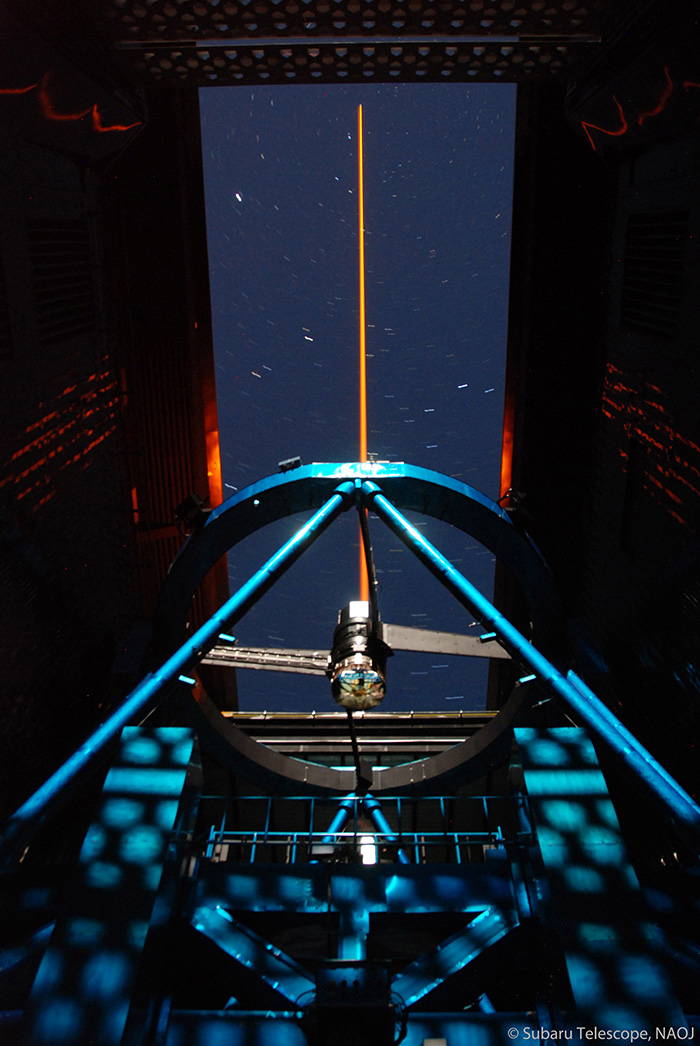Making an Artificial Star with a Laser Projected by the Subaru Telescope
Photo・

| Photographer | Dr. Sebastian Egner |
|---|---|
| Copyright | National Astronomical Observatory of Japan |
Photo・

| Photographer | Dr. Sebastian Egner |
|---|---|
| Copyright | National Astronomical Observatory of Japan |
The Subaru Telescope in Hawai`i offers laser guide star adaptive optics for open use observations. Adaptive optics is a device which obtains stellar images with the telescope’s maximum possible sharpness by correcting image distortion due to turbulence in the Earth’s atmosphere in real time. A bright star is used to determine the image distortion due to atmospheric turbulence. But there isn’t always a bright star near the celestial object you want to observe. For these cases, a laser is used to trigger florescence in the sodium layer of the atmosphere at an altitude of 90 kilometers, creating an ‘artificial star’ to be used by the adaptive optics.
Obtaining a Detailed Image with a Laser Guide Star and Adaptive Optics
Q: This angle looks like it is looking up at the Subaru Telescope from inside the Dome. Is the orange line the laser?
A: Yes, the laser projects into the sky from the back of the telescope’s secondary mirror.
Q: Why?
A: It creates an artificial guide star for the adaptive optics to use. The light has been matched to the orange color needed to trigger florescence in the sodium atoms floating at 90 kilometers altitude.
Q: Doesn’t it interfere with other telescopes?
A: It does have an effect if other telescopes see it. We use something known as the laser traffic control system so that the laser light doesn’t interfere with other telescopes.
Q: Are other telescopes on Mauna Kea equipped with laser guide star adaptive optics?
A: Other than the Subaru Telescope, Gemini-North and the two Keck telescopes are equipped with them. There are times when all 4 lasers are shooting up into the sky. When two lasers interfere with each other, the one which started projecting first is given priority.
Text by: Yutaka Hayano
Translation by: Ramsey Lundock (NAOJ)